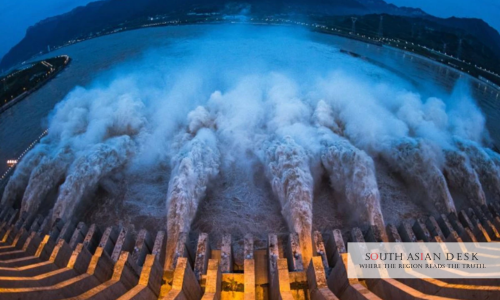New Delhi, 14 October 2025 – India 77 billion hydropower plan has unveiled, focused on the Brahmaputra basin. The Central Electricity Authority released the master plan on Monday, 13 October 2025. It targets evacuation of over 76 GW from 208 projects by 2047 to meet surging power needs.
This India 77 billion hydropower plan matters in South Asia as transboundary rivers fuel tensions. The Brahmaputra flows through China, India, and Bangladesh. India’s move addresses water security and energy independence amid geopolitical strains.
Details of India 77 Billion Hydropower Plan
The plan totals INR 6.4 trillion (USD 77 billion). It covers transmission infrastructure to move power from hydroelectric sites. Phase one runs to 2035 and costs INR 1.91 trillion. Phase two follows at INR 4.52 trillion.
Capacity includes 64.9 GW from large hydro projects and 11.1 GW from pumped-storage plants. These span 12 sub-basins in eight northeastern states: Arunachal Pradesh, Assam, Sikkim, Mizoram, Meghalaya, Manipur, Nagaland, and West Bengal.
Arunachal Pradesh holds 52.2 GW potential. The basin accounts for over 80% of India’s untapped hydro resources. Projects involve central utilities like NHPC, NEEPCO, and SJVN.
India aims for 500 GW non-fossil capacity by 2030 and net zero by 2070. Hydro capacity grew from 35.8 GW in 2014 to 48 GW in 2025. The target is 55 GW by 2030. This India 77 billion hydropower plan supports those goals by reducing fossil fuel reliance.
How India Counters China Upstream Dams 2025
China’s activities on the Yarlung Zangbo prompt this response. Beijing started the world’s largest dam in Tibet in July 2025. Costing nearly USD 170 billion, it may generate power by the 2030s.
India fears dry-season flow cuts up to 85%. The dam could divert 40 billion cubic metres annually. This affects agriculture and industry downstream. Guwahati might see 25% less water without mitigation.
India counters China upstream dams 2025 through strategic infrastructure. The Upper Siang project in Arunachal Pradesh plans 14 billion cubic metres storage. It could reduce Guwahati’s impact to 11%. The dam absorbs surges and moderates floods.
Official engagements continue. In August 2025, External Affairs Minister S Jaishankar raised concerns with China. A 2006 MoU provides hydrological data during floods.
China states the dam has no adverse downstream effects. It denies water diversion. Yet India monitors closely to safeguard interests.
Background on Brahmaputra Basin Tensions
The Brahmaputra originates in Tibet’s Angsi Glacier. It enters India as the Siang before becoming the Brahmaputra. The river sustains millions in India and Bangladesh.
China’s plan includes five stations producing thrice the Three Gorges output. Built in a seismic zone, it risks landslides and floods.
India counters China upstream dams 2025 with its own developments. A 700 MW project near the border got approval in August 2025. These enhance energy while addressing security.
Environmental concerns persist. Dams alter ecosystems and displace communities. In Arunachal, Adi tribes protest the Siang project. It may submerge 16 villages and affect 10,000 to 100,000 people. Locals fear loss of farmland for oranges, cardamom, and pears.
Compensation includes USD 3 million for education and infrastructure. Three villages agreed recently. Construction may take a decade.
India’s hydro push aligns with broader investments. At the Rising North East Investors Summit in May 2025, Prime Minister Narendra Modi highlighted hydropower in the region.
Environmental and Regional Implications
The India 77 billion hydropower plan promotes clean energy. Yet it requires balancing ecology. The basin faces climate risks like glacial outbursts.
For South Asia, shared rivers demand cooperation. Bangladesh worries about flows. India shares data under a 1996 treaty.
Geopolitical context adds urgency. Border disputes since 1962 heighten stakes. India counters China upstream dams 2025 to prevent water weaponisation.
What’s Next
Implementation starts with phase one. Projects need clearances and funding. Local resistance may delay timelines.
Monitoring China’s dam remains key. Diplomatic talks could ease tensions.
This India 77 billion hydropower plan positions India for sustainable growth. It secures energy amid regional challenges.
Published in SouthAsianDesk, October 14th, 2025
Follow SouthAsianDesk on X, Instagram, and Facebook for insights on business and current affairs from across South Asia.






